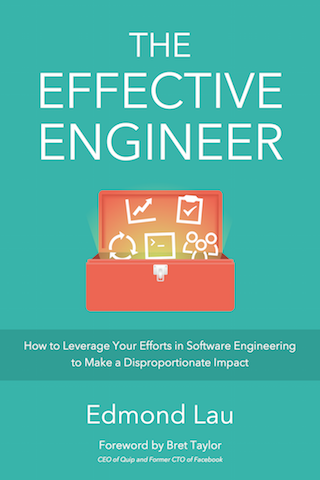What’s Possible Here?

This story captures for me what’s possible in 2017.
A shoe factory sends two marketing scouts to a region in Africa to explore opportunities for business expansion. One reports back, “Situation hopeless. No one wears shoes.”
The other writes back enthusiastically, “Glorious business opportunity! They have no shoes.”
The exact same observation. Two very different interpretations.
This story, related by Rosamund and Benjamin Zander in The Art of Possibility, illustrates my biggest lesson from 2016: We invent many of our own limitations. And by doing so, we inadvertently become the biggest obstacle to our own success. Only by reframing those interpretations into what’s possible can we create more options for ourselves.
Which of Your Limitations Are Self-Invented?
How often do we play the role of the first scout? How often do we adopt interpretations that limit ourselves and shoot down ideas before we even give them a chance?
Say we’re motivated by seeing how our work gets used by customers, but we hesitate to interact with them because that’s the job of the product manager (PM). We invent a narrative that our job is only to code and that we won’t add enough value participating in other activities.
But what is possible here? What insights could our engineering- and problem-solving mindsets bring to the table that aren’t already there? How fulfilling would it be for the PM to work with an engineer who cares deeply about the customer instead of just doing what he’s told? And what better ideas might we develop if our customers’ problems were clearer in our minds?
Or say that we have concrete suggestions about how to improve the team, but we don’t step up and lead because our managers haven’t asked us to. We adopt a limiting interpretation that initiative and responsibility must be conferred.
What’s possible here? How would our team’s productivity or our product’s impact benefit if we weren’t holding back? What if our managers are actually overwhelmed — how much would they appreciate it if someone took the initiative to help the team exceed their goals?
Or say we don’t ask a fellow teammate for help because we’re afraid of wasting her time. We invent a story in our minds that we’re slowing down the team.
We could choose to tell ourselves a different story. What would we be able to get done if we were productive members of the team sooner? How would our teammate feel to have contributed to the team’s success by playing a pivotal role in getting us there?
Or say we shy away from sharing our contributions because we don’t want to promote ourselves (I’m guilty of this one as well). We tell ourselves that marketing and self-promotion are unbecoming and that the work should be its own reward.
What if our story leads and inspires others to strive for more and to become better versions of themselves?
Of course, simply suggesting an interpretation doesn’t make it true. But — and here’s the key — it’s only by reframing the situation into the realm of possibility and giving ourselves a chance, does the situation become a problem that we can start to solve.
The marketing scout who saw a unique business opportunity didn’t make success materialize overnight. But it did mean that Bata Shoes — the shoe company that the story is based on — successfully built up a market in Africa during the late nineteenth century that other shoe manufacturers dismissed as impossible. 1
Ask Yourself, “What’s Possible Here?”
Over the holidays, I wanted to give back to the community of readers and supporters who helped me get to where I am today. In particular, I wanted to give free coaching to engineers because I know how small amounts of coaching — even from a 12-minute session — can evoke powerful transformations.
But I also knew that people generally don’t value free things. I worried that the coaching sessions might be filled with no-shows or people who showed up unprepared and that I’d be wasting my time. And so I nearly abandoned the idea. After all, it wasn’t something I had to do, and since I hadn’t shared my idea with anyone yet, no one would know if I silently failed.
I could see the value of coaching, but I was stuck. I had told myself a story that limited the situation.
I took a deep breath and asked myself, “What’s possible here?” How could I offer something for free and ensure that the people who signed up for coaching actually valued it?
That’s when an idea clicked. I ended up organizing a project where I offered 30-minute pro bono coaching sessions. In exchange, the coachee made a donation to Code.org — a donation that Quip and I matched so that together, we would 4x the donation’s impact and make every donation high-leverage.
As a result of that reframing, I had the incredible opportunity to coach 28 talented engineers, managers, and CTO’s over 5 days. It was a wonderful experience that was exhausting — my friend Diana called it “extreme coaching” — and at the same time fulfilling. In total, we raised $7,200, which is enough to help 7,200 children learn an intro computer science class.
As 2017 kicks off, I challenge you to ask yourself about what’s possible:
- What assumptions are we making that contribute to what we see and that limit our ability?
- What is possible when we treat the people around us as allies instead of obstacles and when we work together to achieve what we all want?
- What happens when we play big instead of playing small?
The Mission for 2017 and Beyond
When I asked myself these questions and thought about what it meant to play big, I realized what my mission statement for the next few years will be:
“Empower engineers and technical leaders with the tools and mindsets to perform at their highest levels, so that they create the meaningful impact they’re capable of.”
I want to share everything that I’ve learned and as much as of what other engineering leaders have learned, so that you can use these tools to drive your own success.
It’s a bold (and admittedly scary) mission. And I can’t do it alone.
For 2017, I’ve found my own coach to help me build more clarity around my goals so that I can best help you in your careers.
I’ll also need your help. You might only consider yourself a reader, but you’re also an ally. And I want to design with you the best way that I can help you learn and grow in your career.
Here’s how you can help. Take a moment, and ask yourself, “Three years from now, in 2020, what’s your dream for what you’ll be doing? What would that be like?”
Share your dream in the comments, or send me a note at dreams@effectiveengineer.com. And I’ll keep your dream in mind to guide the projects I work on this year.
Thanks to Chen Xiao for reading a draft of this post.
Ken Burnett, “The Bata shoes story” ↩

“A comprehensive tour of our industry's collective wisdom written with clarity.”
— Jack Heart, Engineering Manager at Asana
“Edmond managed to distill his decade of engineering experience into crystal-clear best practices.”
— Daniel Peng, Senior Staff Engineer at Google

“A comprehensive tour of our industry's collective wisdom written with clarity.”
— Jack Heart, Engineering Manager at Asana
“Edmond managed to distill his decade of engineering experience into crystal-clear best practices.”
— Daniel Peng, Senior Staff Engineer at Google


















Leave a Comment